Jewish History Books for Young Adults: The Holocaust (Page 7) |
If you wish to purchase any of these books, click on either the title or the book cover to be directed to Amazon.com. As a warning, I have put up pictures of the book covers to give you somewhat an idea of the style of each book (I know, I know. "Don't judge a book by its cover") so the pages may load slowly, depending on the speed of your internet connection.
If this page came up without frames, Click here to see the complete website
NOTE: For biographies of individuals associated with the Holocaust (Anne Frank,
Simon Wiesenthal, etc.), go to the
Biographies
For historical fiction books that take place during the Holocaust, go to the
Holocaust Historical Fiction Books Page
For Holocaust books for younger readers, go to the Children's History Page
Other Pages of Interest:
Holocaust History Books For Middle School and Young Adult Readers ...
(Page 1)
(Page 2)
(Page 3)
(Page 4)
(Page 5)
(Page 6)
Holocaust Historical Fiction Books For Middle School and Young Adult Readers ...
(Page 1)
(Page 2)
(Page 3)
(Page 4)
(Page 5)
(Page 6)
Middle School and YA Books ...
Bar Mitzvah Books |
Jewish Fiction |
Historical Fiction |
Torah Study |
Prayer and Jewish Life Books |
Jewish Holidays |
Jewish Biographies |
Jewish History Books |
Holocaust Books for Teens |
Israel Books
Jewish Historical Fiction for Middle School and YA Readers...
Biblical Era |
Middle Ages, Renaissance, and the Spanish Inquisition |
Immigration & The American Experience |
European History |
Holocaust
(Page 1)
(Page 2)
(Page 3)
(Page 4)
(Page 5)
(Page 6) |
Israel
Jewish History Books for Middle School and Young Adult Readers ...
General Jewish History & Nonfiction |
Biblical Era |
European History (Excluding the Holocaust) |
Immigration & The American Experience |
Holocaust |
Israel
Easy Reader and Picture Books ...
Jewish Children's Books (General) |
Jewish Board Books |
Biblical Stories for Children |
Jewish Holiday Books |
Jewish Family Cookbooks |
Folktales and Talmudic Stories for Children |
Jewish Life Books (Mitzvot, Keeping Kosher, etc.) |
Jewish Life Cycle Books |
Family Haggadahs |
Children's Prayerbooks |
Introductory Hebrew Books |
Jewish History and Historical Fiction Picture Books |
Israel Books
And More ...
Jewish Books for Children |
Bar Mitzvah Books |
Jewish Parenting Books |
Hanukkah Books |
Jewish Music for Children |
Jewish Videos |
Jewish Toys and Gifts |
Jewish Gift Baskets and Gourmet Food |
Jewish Jewelry |
Amazon.com Coupons, Promotions, and Sales
NOTE: For biographies of individuals associated with the Holocaust (Anne Frank,
Simon Wiesenthal, etc.), go to the
Biographies
For historical fiction books that take place during the Holocaust, go to the
Holocaust Historical Fiction Books Page
For Holocaust books for younger readers, go to the Children's History Page
Other Pages of Interest:
Holocaust History Books For Middle School and Young Adult Readers ...
(Page 1)
(Page 2)
(Page 3)
(Page 4)
(Page 5)
(Page 6)
Holocaust Historical Fiction Books For Middle School and Young Adult Readers ...
(Page 1)
(Page 2)
(Page 3)
(Page 4)
(Page 5)
(Page 6)
Middle School and YA Books ...
Bar Mitzvah Books |
Jewish Fiction |
Historical Fiction |
Torah Study |
Prayer and Jewish Life Books |
Jewish Holidays |
Jewish Biographies |
Jewish History Books |
Holocaust Books for Teens |
Israel Books
Jewish Historical Fiction for Middle School and YA Readers...
Biblical Era |
Middle Ages, Renaissance, and the Spanish Inquisition |
Immigration & The American Experience |
European History |
Holocaust
(Page 1)
(Page 2)
(Page 3)
(Page 4)
(Page 5)
(Page 6) |
Israel
Jewish History Books for Middle School and Young Adult Readers ...
General Jewish History & Nonfiction |
Biblical Era |
European History (Excluding the Holocaust) |
Immigration & The American Experience |
Holocaust |
Israel
Easy Reader and Picture Books ...
Jewish Children's Books (General) |
Jewish Board Books |
Biblical Stories for Children |
Jewish Holiday Books |
Jewish Family Cookbooks |
Folktales and Talmudic Stories for Children |
Jewish Life Books (Mitzvot, Keeping Kosher, etc.) |
Jewish Life Cycle Books |
Family Haggadahs |
Children's Prayerbooks |
Introductory Hebrew Books |
Jewish History and Historical Fiction Picture Books |
Israel Books
And More ...
Jewish Books for Children |
Bar Mitzvah Books |
Jewish Parenting Books |
Hanukkah Books |
Jewish Music for Children |
Jewish Videos |
Jewish Toys and Gifts |
Jewish Gift Baskets and Gourmet Food |
Jewish Jewelry |
Amazon.com Coupons, Promotions, and Sales
Other Pages of Interest:
Holocaust History Books For Middle School and Young Adult Readers ...
(Page 1)
(Page 2)
(Page 3)
(Page 4)
(Page 5)
(Page 6)
Holocaust Historical Fiction Books For Middle School and Young Adult Readers ...
(Page 1)
(Page 2)
(Page 3)
(Page 4)
(Page 5)
(Page 6)
Middle School and YA Books ...
Bar Mitzvah Books |
Jewish Fiction |
Historical Fiction |
Torah Study |
Prayer and Jewish Life Books |
Jewish Holidays |
Jewish Biographies |
Jewish History Books |
Holocaust Books for Teens |
Israel Books
Jewish Historical Fiction for Middle School and YA Readers...
Biblical Era |
Middle Ages, Renaissance, and the Spanish Inquisition |
Immigration & The American Experience |
European History |
Holocaust
(Page 1)
(Page 2)
(Page 3)
(Page 4)
(Page 5)
(Page 6) |
Israel
Jewish History Books for Middle School and Young Adult Readers ...
General Jewish History & Nonfiction |
Biblical Era |
European History (Excluding the Holocaust) |
Immigration & The American Experience |
Holocaust |
Israel
Easy Reader and Picture Books ...
Jewish Children's Books (General) |
Jewish Board Books |
Biblical Stories for Children |
Jewish Holiday Books |
Jewish Family Cookbooks |
Folktales and Talmudic Stories for Children |
Jewish Life Books (Mitzvot, Keeping Kosher, etc.) |
Jewish Life Cycle Books |
Family Haggadahs |
Children's Prayerbooks |
Introductory Hebrew Books |
Jewish History and Historical Fiction Picture Books |
Israel Books
And More ...
Jewish Books for Children |
Bar Mitzvah Books |
Jewish Parenting Books |
Hanukkah Books |
Jewish Music for Children |
Jewish Videos |
Jewish Toys and Gifts |
Jewish Gift Baskets and Gourmet Food |
Jewish Jewelry |
Amazon.com Coupons, Promotions, and Sales
Holocaust Historical Fiction Books For Middle School and Young Adult Readers ... (Page 1) (Page 2) (Page 3) (Page 4) (Page 5) (Page 6)
Middle School and YA Books ... Bar Mitzvah Books | Jewish Fiction | Historical Fiction | Torah Study | Prayer and Jewish Life Books | Jewish Holidays | Jewish Biographies | Jewish History Books | Holocaust Books for Teens | Israel Books
Jewish Historical Fiction for Middle School and YA Readers... Biblical Era | Middle Ages, Renaissance, and the Spanish Inquisition | Immigration & The American Experience | European History | Holocaust (Page 1) (Page 2) (Page 3) (Page 4) (Page 5) (Page 6) | Israel
Jewish History Books for Middle School and Young Adult Readers ... General Jewish History & Nonfiction | Biblical Era | European History (Excluding the Holocaust) | Immigration & The American Experience | Holocaust | Israel
Easy Reader and Picture Books ... Jewish Children's Books (General) | Jewish Board Books | Biblical Stories for Children | Jewish Holiday Books | Jewish Family Cookbooks | Folktales and Talmudic Stories for Children | Jewish Life Books (Mitzvot, Keeping Kosher, etc.) | Jewish Life Cycle Books | Family Haggadahs | Children's Prayerbooks | Introductory Hebrew Books | Jewish History and Historical Fiction Picture Books | Israel Books
And More ... Jewish Books for Children | Bar Mitzvah Books | Jewish Parenting Books | Hanukkah Books | Jewish Music for Children | Jewish Videos | Jewish Toys and Gifts | Jewish Gift Baskets and Gourmet Food | Jewish Jewelry | Amazon.com Coupons, Promotions, and Sales
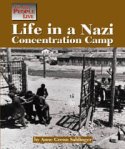 Life in a Nazi Concentration Camp By Anne Grenn Saldinger |
Life in a Nazi concentration camp was far worse than anything the prisoners had imagined or experienced. Thousands of people were killed upon arrival at death camps, countless others were worked to death, but some prisoners managed to survive. What was life like for those who spent up to five years struggling to stay alive in a camp? Encountering unbearable conditions, severe punishment, and relentless oppression, each day became a struggle to survive.
At last, a text that depicts life in a concentration camp as experienced by a mosaic of those who lived it. Dr. Anne Grenn Saldinger's 108 page text, Life in a Nazi Concentration Camp, provides the teen-aged reader with a sense of the vastness of the Nazi concentration camp system. She includes a sidebar entitled "shattered teenage dreams" that describes the experience of those the same age as her young readers, thus allowing for maximum identification. Throughout, Dr. Grenn Saldinger connects these experiences to the lessons to be learned for today. Details from a variety of survivor's videotaped histories or memoirs illustrate her narrative that explains how the Nazis implemented the "Final Solution," the Nazi euphemism for the genocide of the Jews. She begins with Nazi ideology that gave rise to the camp system. There is a short chapter describing the Jews' transition from ghetto to camp, a crucial step in the extermination process often omitted in Holocaust literature. Her young reader will learn important details such as Jews were not the only victims, prisoners had to wear triangles which colors represented the various persecuted groups, and that every inmate had to master unwritten rules of survival. The question of resistance is answered by presenting examples such as the Warsaw Ghetto uprising and the bombing of a crematorium at Auschwitz-Birkenau. She emphasizes that staying alive under the dehumanizing conditions also demonstrated active resistance against the Nazi determination to eradicate all Jewish life. Dr. Grenn Saldinger describes the inhumane conditions clearly and vividly both by her descriptions and by survivor testimony. Her examples do not dwell on the revolting and are sometimes uplifting. For example, she cites the story of a Gypsy (one of the groups targeted for extinction by the Nazis) inmate who saved 16 Jewish children. These children lived to liberation thanks to the Gypsy boy's initiative. The appendix lists the major concentration and death camps followed by an abbreviated glossary of terms. Her suggestions for further reading include an annotated list of a dozen texts suitable for teenagers. On the next to the last page, Dr. Grenn Saldinger includes the pledge against intolerance created by the World of Difference Institute of the Anti-Defamation League that enables the reader to recognize and declare "that respect for individual dignity, achieving equality, and opposing anti-Semitism, racism, ethnic bigotry, homophobia, or any other form of hatred is a non-negotiable responsibility of all people." As a Holocaust educator, I have been looking for and finally found a text on this subject that won't exhaust my students. I highly recommend this book even if you are not a Holocaust educator. It includes virtually |
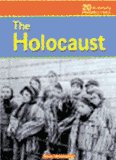 20th Century Perspectives: The Holocaust By Susan Willoughby |
This series examines the causes and effects of six of the most important events in the last century. Each title provides in-depth background information and detailed descriptions of the event, while also considering the issues at stake, the people involved, the aftermath, and consequences.
|
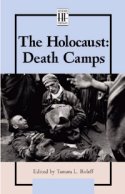 History Firsthand: The Holocaust Death Camps By Tamara L. Roleff |
Approximately six million Jews were killed during the Holocaust in World War II. The authors in this anthology offer personal accounts of the death camps in which many of them lived for years. The essays discuss the inmates' arrival in the camps, their daily struggle for survival, the work they were forced to perform, how they managed to continue living among so much death, their feelings upon liberation, and how the Germans felt About the Hitler's Final Solution to the Jewish Problem.
Following a brief history of the Holocaust, first-person accounts focus on different aspects of the experience from arrival to liberation. Each chapter contains a quick preface to explain the context, for example, arriving at the camps, and then there are three or four accounts on the topic from differing viewpoints. The selections are particularly well chosen-each person's story adds a vital color to the canvas of this book. Along with sadly familiar stories from a nurse, a man on gruesome work detail, and one of the twins from Dr. Mengele's "experiments," there are little-seen post-war accounts from an apologetic local teenager; an unrepentant camp commandant; and a horrified Edward R. Morrow, reporting the human toll at Buchenwald for the first time. This is powerful testimony, related by those who were there. |
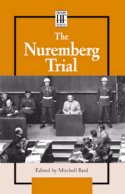 History Firsthand: The Nuremberg Trials By Mitchell Bard |
The first tribunal to judge war criminals was formed at the close of World War II in the German city of Nuremberg. Knowing that atrocities are common to warfare, the United States and its allies set out at the outset of the trial to prove that many in Hitler's Nazi regime had exceeded the scope of military barbarism and, instead, actively pursued crimes against humanity. From court transcripts, newspaper reportage, and personal remembrances, the Nuremberg Trial and its ramifications come to life in Greenhaven Press' anthology.
Following a thorough introduction that provides novice historians with background information, this series entry uses primary-source documents organized in a coherent chronology to demonstrate how the Allies set a precedent and brought Nazi war criminals to justice. Each of the five chapters begins with a narrative preface and contains two to four essays, each with an explanatory introduction. For example, "Preparation for Trial" includes articles by Supreme Court Justice Robert H. Jackson, lead council for the prosecution, and Seymour Peyser, one of the prosecutors responsible for building the cases. The closing chapter, "Reporting on the Trial," gives the perspectives of two journalists responsible for covering the yearlong drama. With its important documents, this work will help budding historians and researchers make sense of a complex time and groundbreaking legal action. |
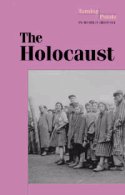 Turning Points in World History: The Holocaust By Mitchell Geoffrey Bard |
The Holocaust represents the first time in history that a modern nation has used its resources for the express purpose of mass murder. This unprecedented mass extermination was responsible for nearly 6 million deaths.
|
 Hannah Szenes : A Song of Light |
Hannah Szenes grew up in a loving home filled with books, plays, and music.
Unfortunately the rise of the Nazis in her native Hungary forced Hannah to
emigrate to Palestine, where she became an ardent Zionist pioneer. Haunted
by the murder of the Jews by Hitler, she risked her own life to become a
resistance fighter, vowing to save as many Jewish lives as possible.
As the war in Europe escalated, Szenes returned to Hungary on a mission
to aid the resistance fighters, where she was arrested and executed in
1944 at age 23
|
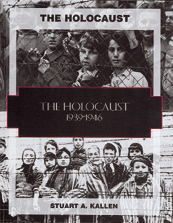 The Holocaust: 1939-1945 (The Holocaust) By Stuart A. Kallen |
This series examines one of the greatest tragedies of all time-the Jewish holocaust. These insightful books educate children about the events surrounding the Holocaust, without avoiding disturbing facts. Illustrations include photos from the United States Holocaust Memorial Museum.
|
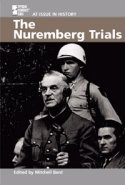 At Issue in History: The Nuremberg Trials By Mitchell Bard |
"I was just following orders." Nazis gave this excuse for committing previously unimaginable atrocities. In trying 22 of the highest Nazi officials at Nuremberg, the Allies established that this was not an acceptable defense and that war crimes would not go unpunished. This anthology details the preparation and conduct of the "greatest criminal trial."
|
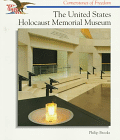 The United States Holocaust Memorial Museum (Cornerstones of Freedom) By Philip Brooks |
This book describes the planning and building of the U.S. Holocaust Memorial
Museum and examines its exhibits documenting the European Holocaust from 1933 to 1945.
|
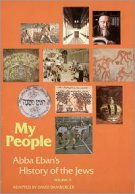 My People: Abba Eban's History of the Jews Volume 2: From the Eighteenth Century to Our Own Time Adapted by David Bamberger |
The Jewish people's spirit and place in world history since 1776. Chronicles the Jewish experience in the American and French revolutions, through the birth of Zionism and the devastation of the Holocaust, and into today's world. Also includes the struggle for Israeli independence as Eban lived it.
Volume 1 Also Available |
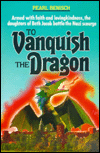 To Vanquish the Dragon |
In this memoir of her Holocaust experiences, Pearl Benisch writes about the
young women who were students and graduates of Bais Yaakov school in
Karkow. Inspired by their Jewish faith, and by their spiritual mentor,
Sarah Schenirer, who founded the first Bais Yaakov school, they fought
the Nazis with acts of kindness to others imprisoned with them in the
ghetto, the prisons, and the labor camps.
|
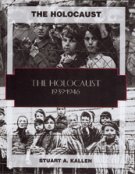 The Holocaust : 1939-1945 By Stuart A. Kallen |
This series examines one of the greatest tragedies of all time,the
Holocaust. These insightful books educate children about the events
surrounding the Holocaust, without avoiding disturbing facts.
Illustrations include photos from the United States Holocaust
Memorial Museum.
|
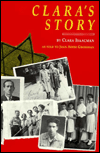 Clara's Story By Clara Isaacman |
The human dimensions of the Holocaust come to life for young readers in
Clara's story of survival in Nazi-occupied Antwerp as a hidden child.
Clara Isaacman describes her own and her family's experiences during
the two and one-half years they spent in hiding in Antwerp, Belgium,
during World War II.
|
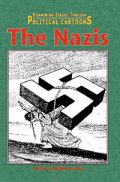 Examining Issues Through Political Cartoons: The Nazis By William Dudley |
Both Nazi propagandists and opponents used cartoons to spread their ideas in Germany and other parts of the world. This unique collection of political cartoons chronicles the rise and fall of Adolf Hitler with contributions from German, British, Soviet, and American artists.
|
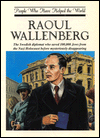 Raoul Wallenberg |
Traces the life of the Swedish diplomat who risked his
life to save 100,000 Hungarian Jews during World
War II and mysteriously disappeared after the Russians
occupied Budapest.
|
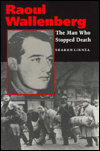 Raoul Wallenberg : The Man Who Stopped Death |
In the last days of World War II, a young Swedish architect, Raoul Wallengerg, was
secretly sent to Budapest by the War Refugee Board of the United States Government.
There he did what no other country or individual was able to do: he saved more
than 100,000 Jewish men, women, and children from extermination at the hands of
the Nazi Colonel Adolph Eichmann. This meticulously researched biography is
based upon archival materials and first-person interviews with Wallenberg's family,
colleagues, and people he saved. It is illustrated with original photographs. To this
day, no one knows the fate of Raoul Wallenberg, but his belief that one person can
make a difference endures as a legacy for us all.
|